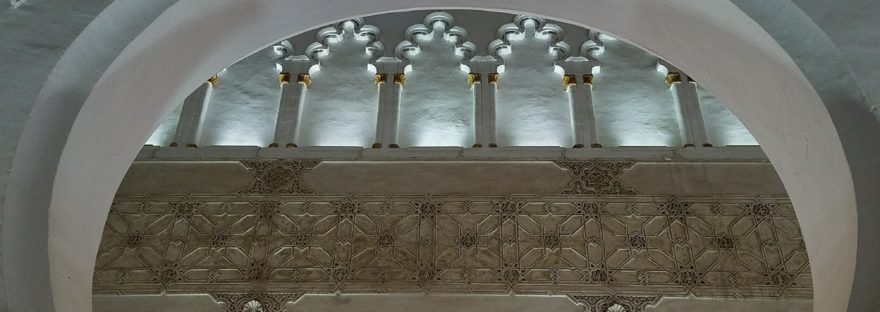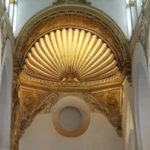 “I came to the extensive city of Toledo, capital of the kingdom, which is clothed with the charm of domination and adorned with science, showing the people and princes their beauty. […] How many synagogues there are in it of incomparable beauty! There the whole soul praises the Lord. “
“I came to the extensive city of Toledo, capital of the kingdom, which is clothed with the charm of domination and adorned with science, showing the people and princes their beauty. […] How many synagogues there are in it of incomparable beauty! There the whole soul praises the Lord. “
This is how the “Santa Maria la Blanca” Synagogue was considered by Yehuda ben Shlomo al-Jarizi in his writings of the twelfth century.
The origins of the Synagogue of “Santa Maria la Blanca” in Toledo (Spain), would go back, according to an inscription preserved in a beam of the building, to the year 1180, which would correspond to the 4940 according to the Jewish calendar. It can be said that after the Roman and Visigothic remains, the “Santa María la Blanca” Synagogue and the “Cristo de la Luz” mosque are the oldest monuments in Toledo.
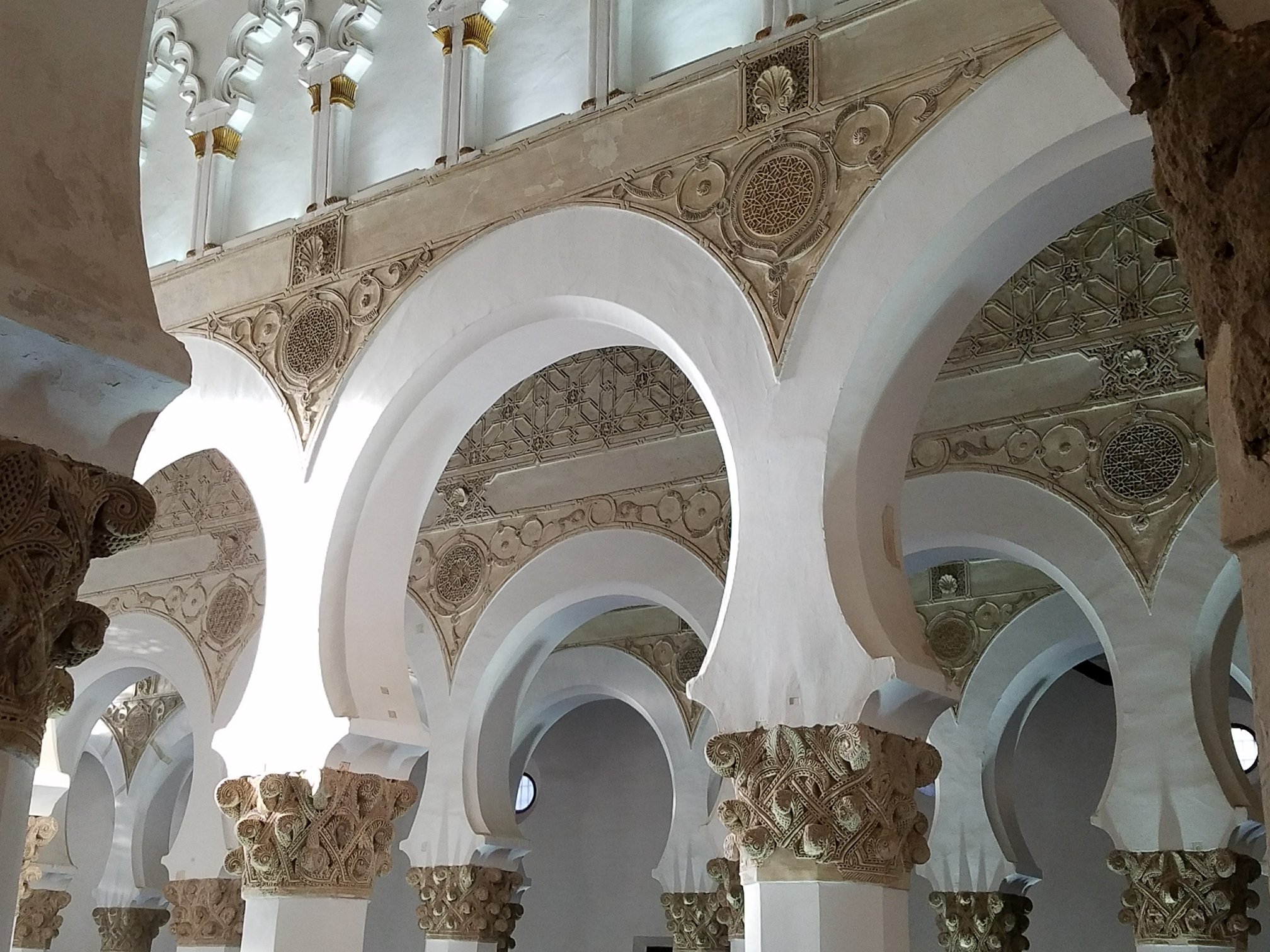
Its interior, full of light, is organized in five parallel naves covered with wooden coffered ceilings. It has 32 capitals that finish the supports of the four arcades that forms its interior, all of them different from each other and decorated by geometric and vegetable frameworks; mainly stems, pineapples and volutes.
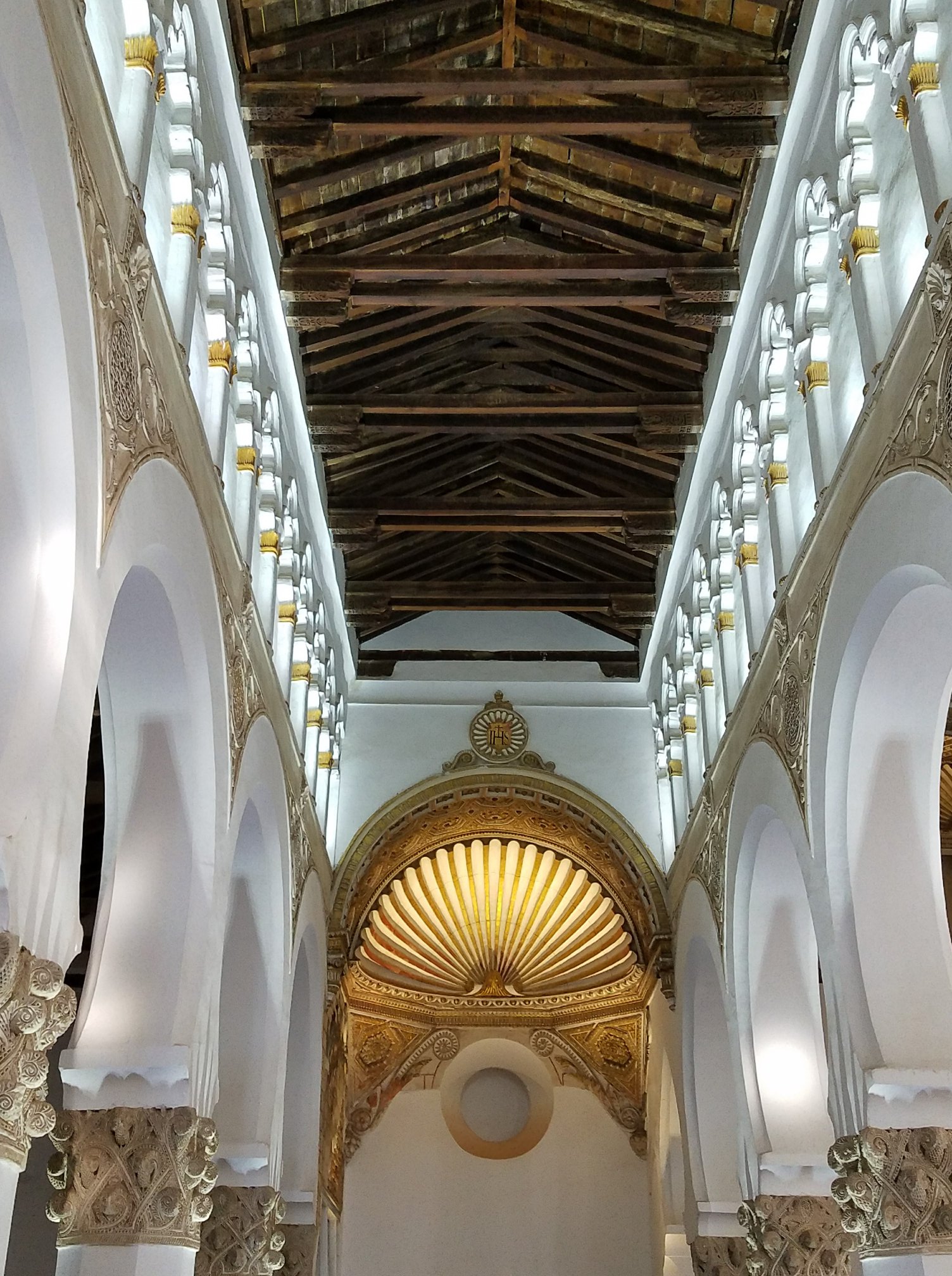
The structure consists of five naves separated by 32 octagonal pillars of brick and cement covered with stucco and painted with lime. At first glance, its whiteness is what stands out.
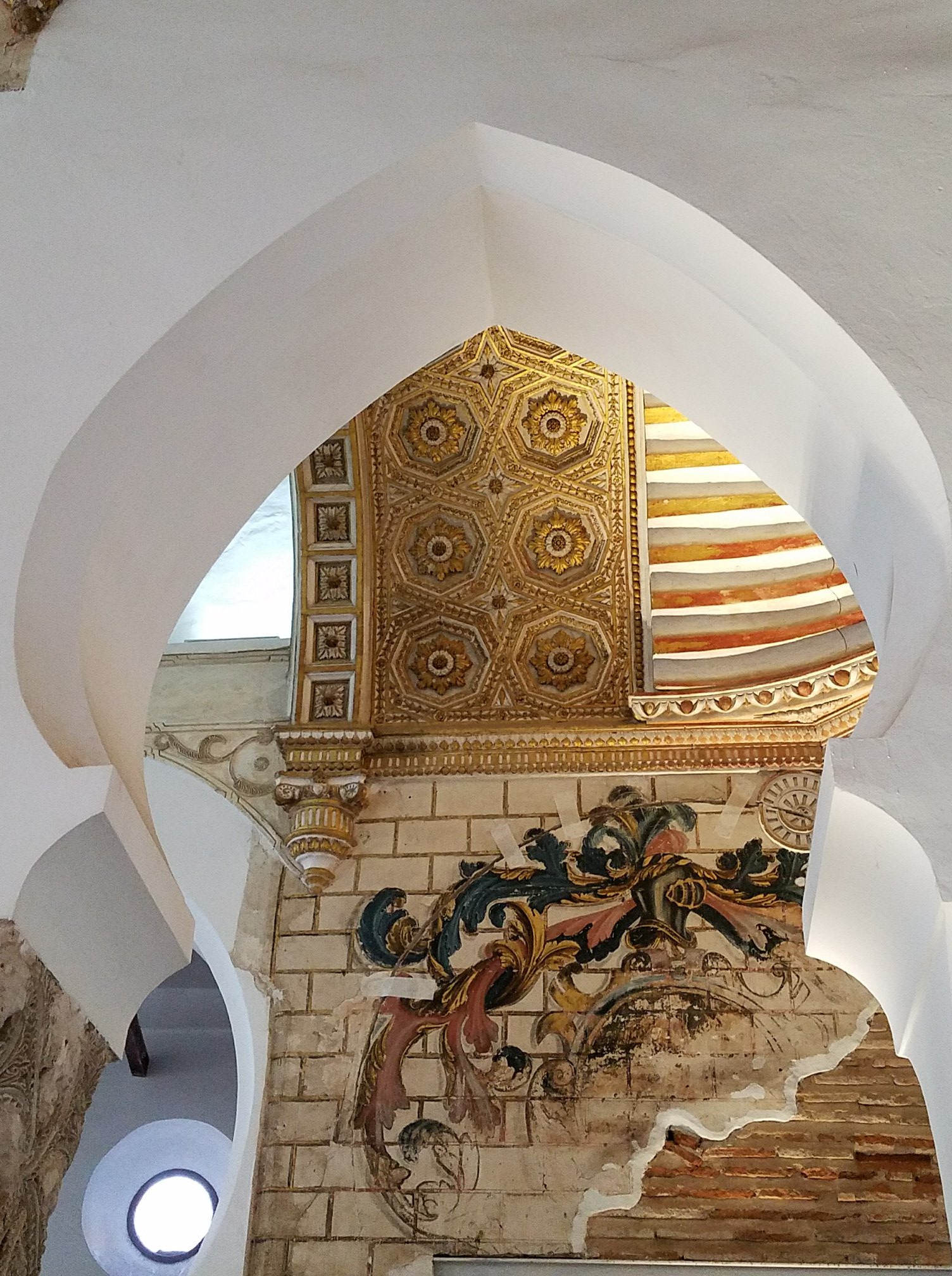
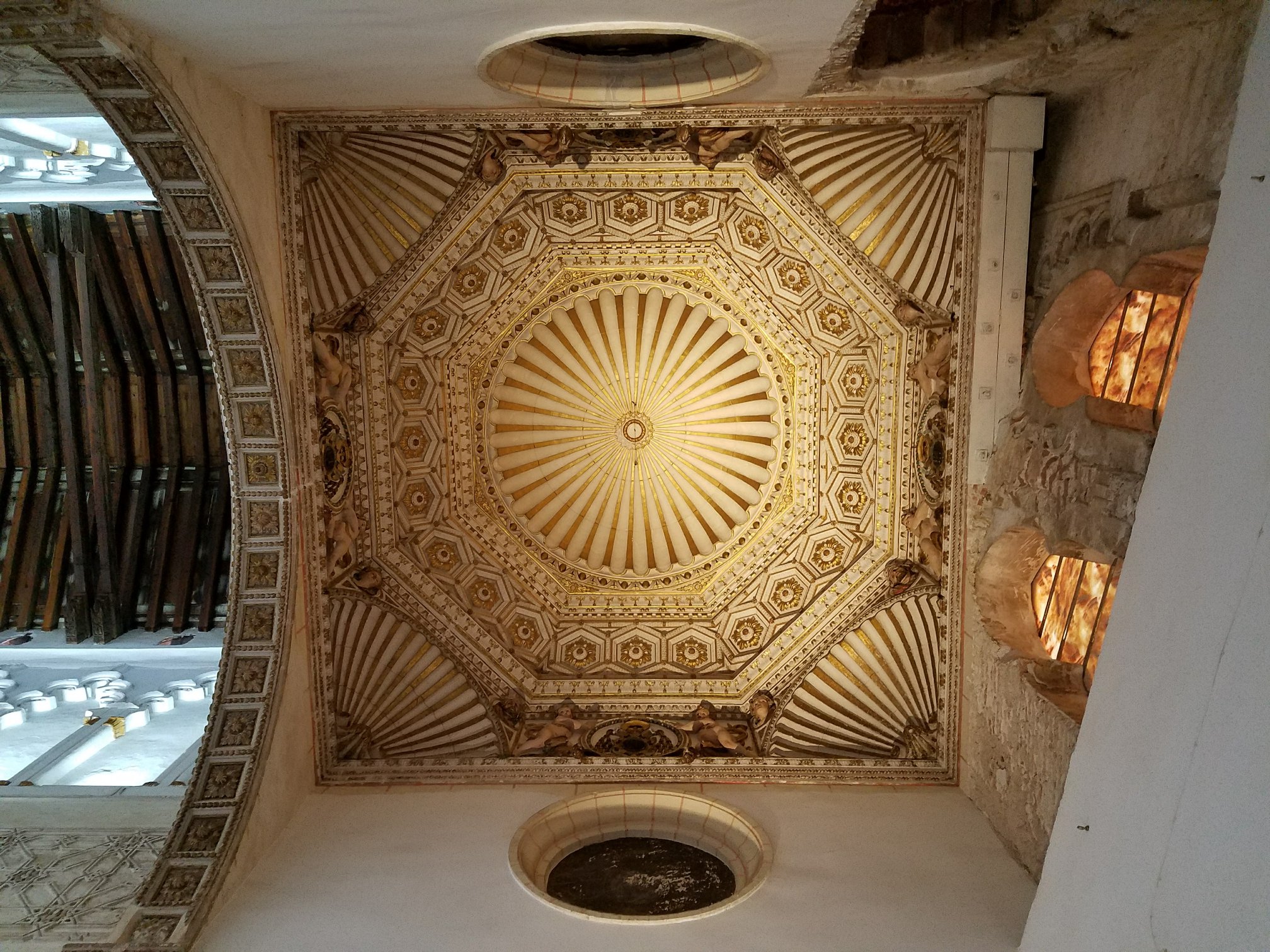
Its cupola or dome in the shape of a shell, or half sphere, is richly decorated.
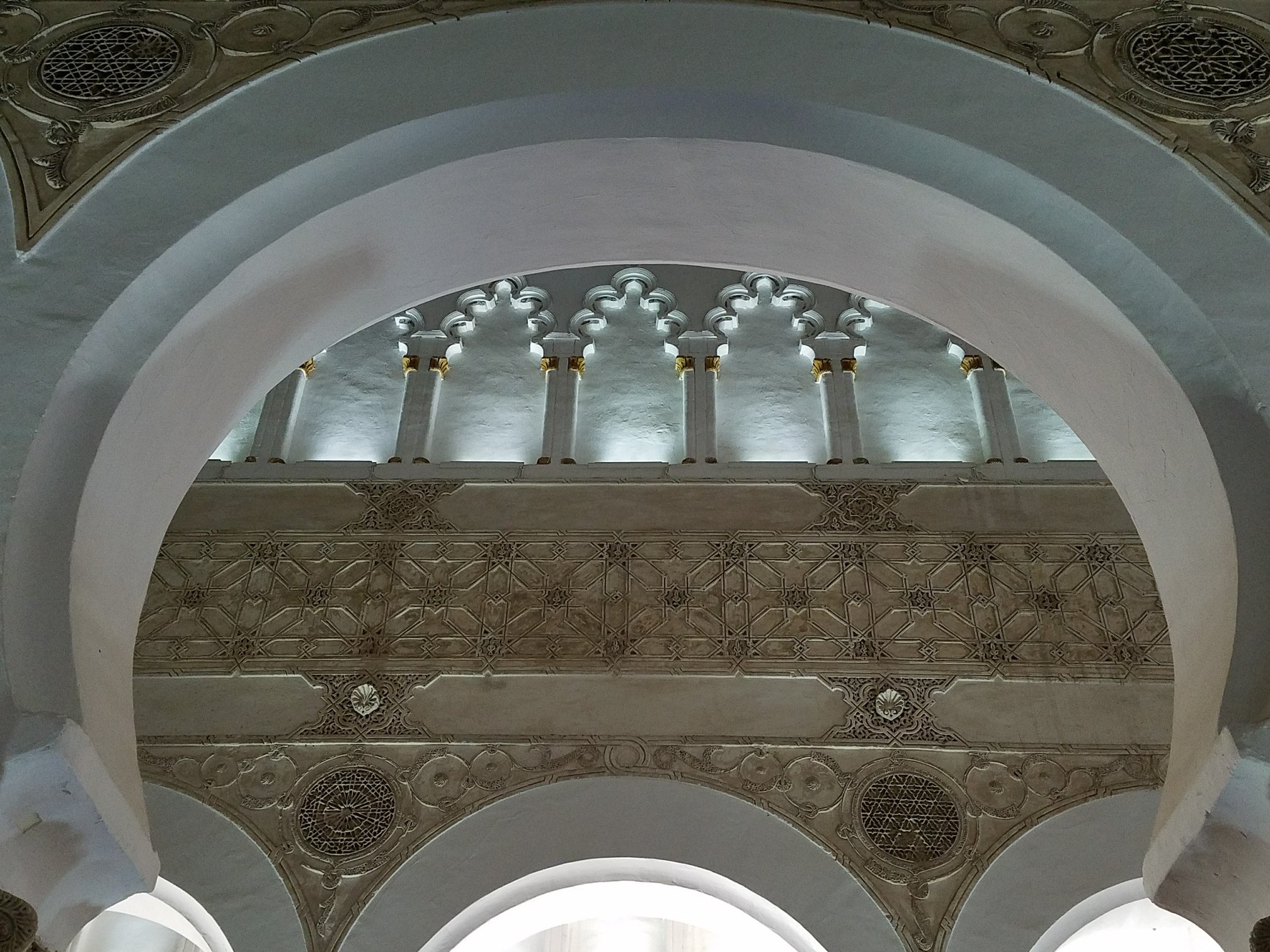
Despite being originally a synagogue, its Christian name is most striking. Of course, this is explained with its conversion into a Christian temple, once it was taken away from the Jews at the end of the 14th century. It was later ceded to the Order of “Calatrava” and consecrated to the dedication of “Santa María la Blanca”.
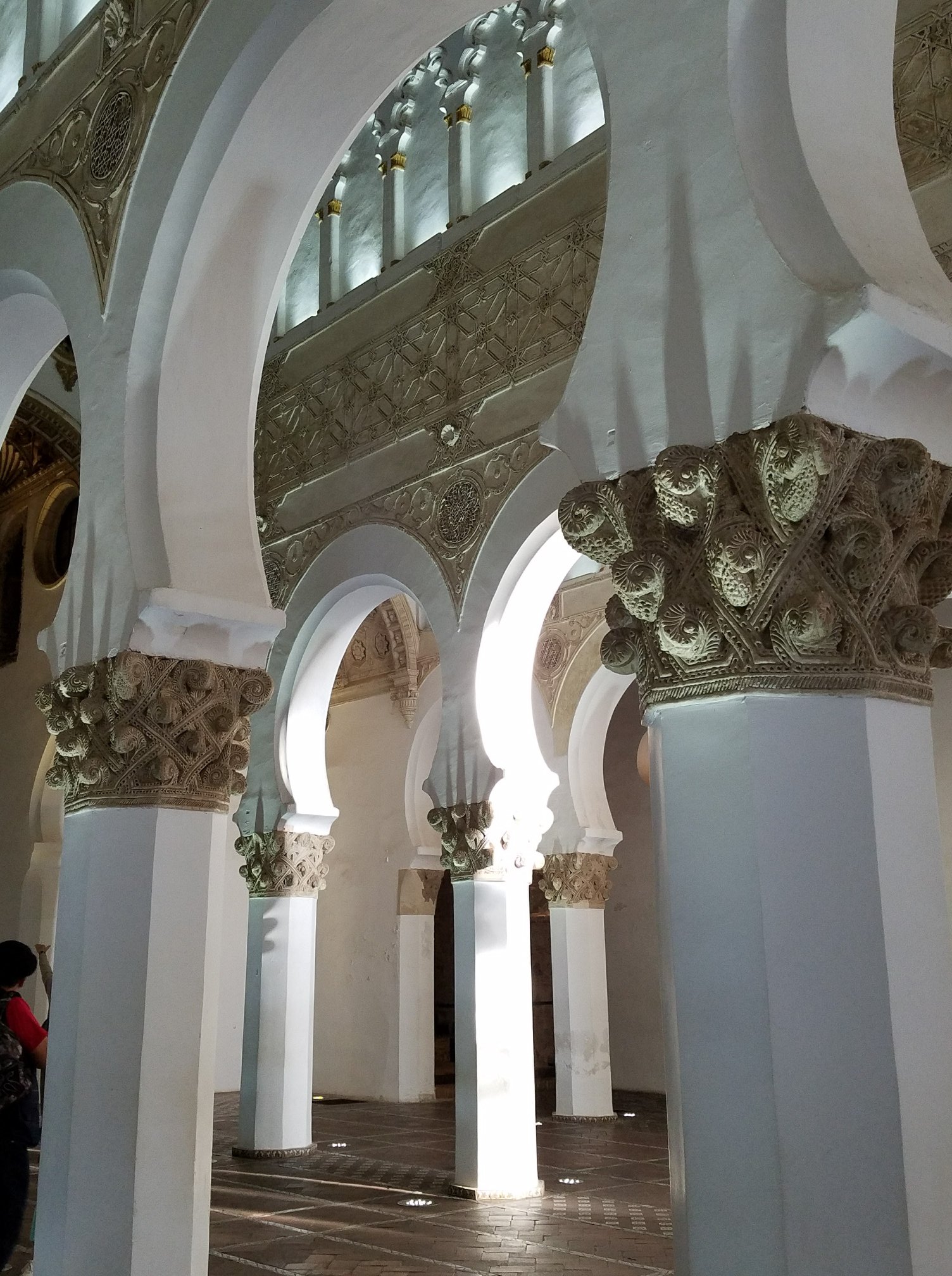
It was known as the Greater Synagogue of Toledo, being the main one of the ten Toledo synagogues. These were reduced after the anti-Semitic revolt in 1391. By 1492 these had practically disappeared, specially following the expulsion of the Jews. Nowadays, the”Santa María la Blanca” and the Transit Synagogues are the only ones to remain in Toledo. However, although both are synagogues, the spatial organization of “Santa María la Blanca” is more like a mosque, with its parallel naves.

